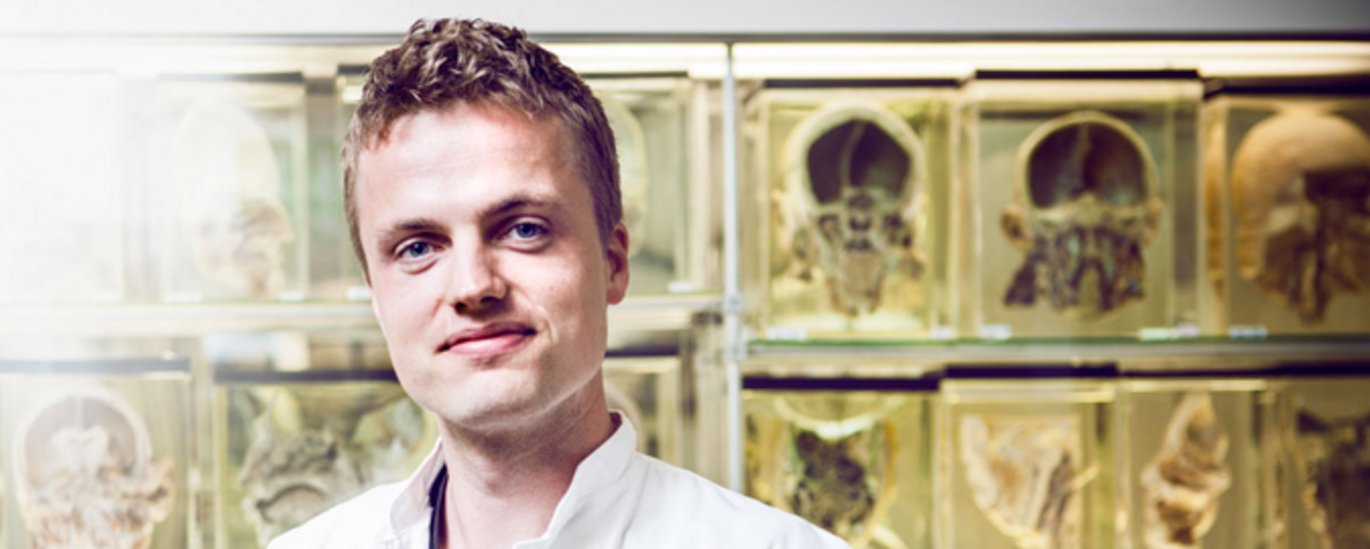Show me the money!
Niels Okkels, a student of medicine, is one of the first people in Denmark to use crowd funding to finance his research. He believes that the method could help to put an end to the kind of old-school attitudes that build barriers around research.

USD 65,460 in 90 days. This is the goal that has been set by Niels Okkels, a student of medicine who is asking people like you and me for money to finance a new research project. Crowd funding is a well-known phenomenon in the world of culture and business, and in the US the method is also used to raise funds for research. But Niels Okkels is one of the first people in Denmark to use crowd funding to finance a research project.
He is an 11th-semester student of medicine who has already taken part in several research projects. His current project involves studying whether changes in the brain – caused by mental illness, for instance – can change the immune system and cause immune-related diseases such as psoriasis or Crohn’s disease. The project involves researchers from AU, the University of Cambridge, Columbia University and UCLA. They are looking for funding amounting to USD 65,460, and they hope to raise the money from contributions made by the general public as well as organisations and companies.
All or nothing
“We’re trying to fund the entire project via crowd funding, but we’re also going to apply for more conventional sources of finance. The rules of Microryza (the crowd funding site that Niels Okkels uses, ed.) state that all donations are cancelled if you fail to raise the full sum of money that you need. It’s all or nothing. The people donating the money undertake to pay a certain amount, but only if you reach your goal,” he explains. And he acknowledges that this goal is still a long way off.
“But even if we don’t get all the money, this has been a success because we have managed to generate some interest in a concept which I believe can change the way we think about financing research, as well as making our research environments more innovative and dynamic.”
An obvious choice for young researchers
Niels Okkels believes that the method is an obvious choice for young researchers.
“Normally research funding is awarded to experienced researchers with a long CV and a long beard. It’s difficult for young people like me to compete successfully.”
“Crowd funding is a quick and easy way to apply for funds, so new ideas can be launched quickly. In the long term I believe that this way of financing research will lead to greater discoveries.”
Liver pâté and Jamie Oliver
Crowd-funding platforms generally encourage an open attitude to research projects. Researchers have to present their projects online, as well as keeping their donors updated on a regular basis. The concept also involves publishing the results in Open Access journals. This isn’t popular with everyone, but Niels Okkels supports the idea.
“It’s a good development; and it feels right that research results that are funded by the people should go directly to the people instead of being locked away in journals which you can only read if you have paid for access.”
Openness is the way forward, says the young researcher.
“My grandmother makes a really great liver pâté which everyone loves in our family, but you can never persuade her to reveal the recipe. In a way she’s a picture of the kind of old-fashioned research culture that builds a wall around research. How far would Jamie Oliver have got if he had kept his recipes a secret? Ideas have to be shared.”
Crowd funding can be criticised for favouring research which is easy to communicate and easy to relate to. Niels Okkels acknowledges this fact, but emphasises that it simply means that researchers need to be even better at communicating the results of their research. This is also one of his personal hobby horses.
“My vision is that more research should be communicated to the general public than is the case today.”
So how is he getting on with the USD 65,460? By the time of the Omnibus deadline Niels Okkels had collected USD 1.143, which is 1,7 per cent of the full amount with 27 days left to collect the rest.
“I’ve been told that crowd funding is a bit like running a marathon: you just have to keep going until you cross the finishing line,” says Okkels.
Read more about the project here: microryza.com/projects/the-mind-and-the-immune-system
What is crowd funding?
Crowd funding enables ordinary people to support projects on an equal footing with companies and organisations by making direct donations of large or small amounts of money. They can support cultural products, charity projects, business ideas and now research as well. Crowd funding is like public fund raising.
Crowd funding is widespread in the world of culture. For instance, it helps to finance books, music productions and films. It is also widely used to finance business ideas and projects – check out www.kickstarter.com, for instance.
There are various platforms on the Internet for the crowd funding of research: www.petridish.org or www.microryza.com, for instance. This is where researchers can present their projects and people can donate money.

